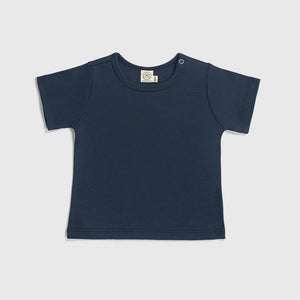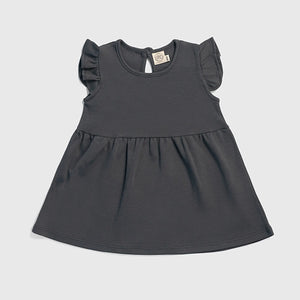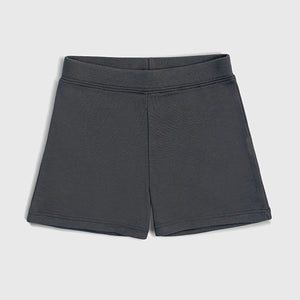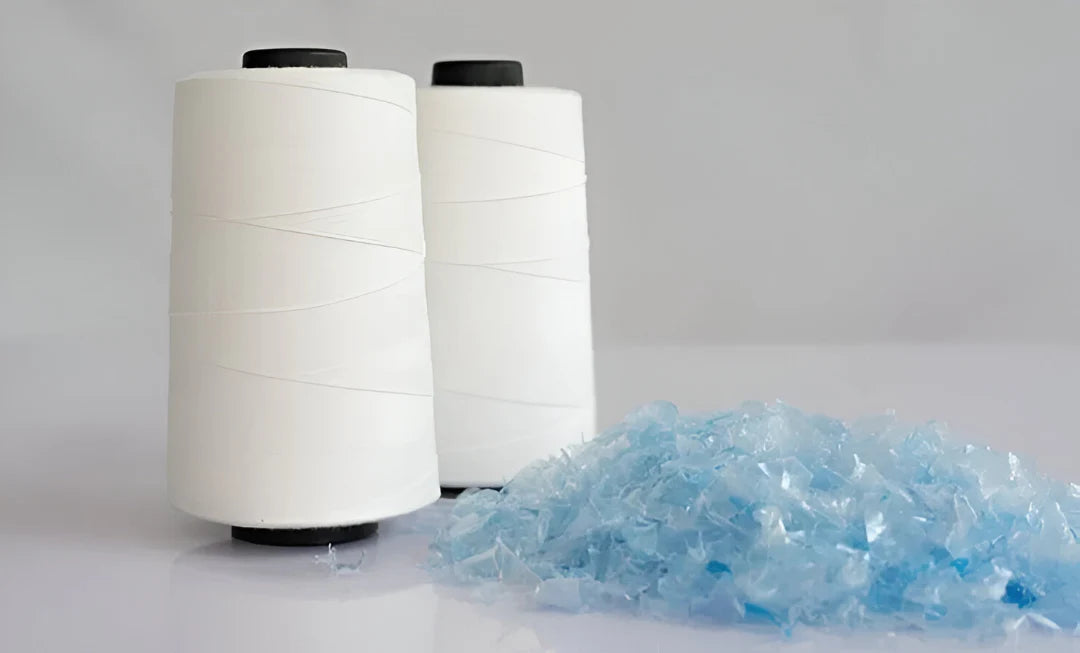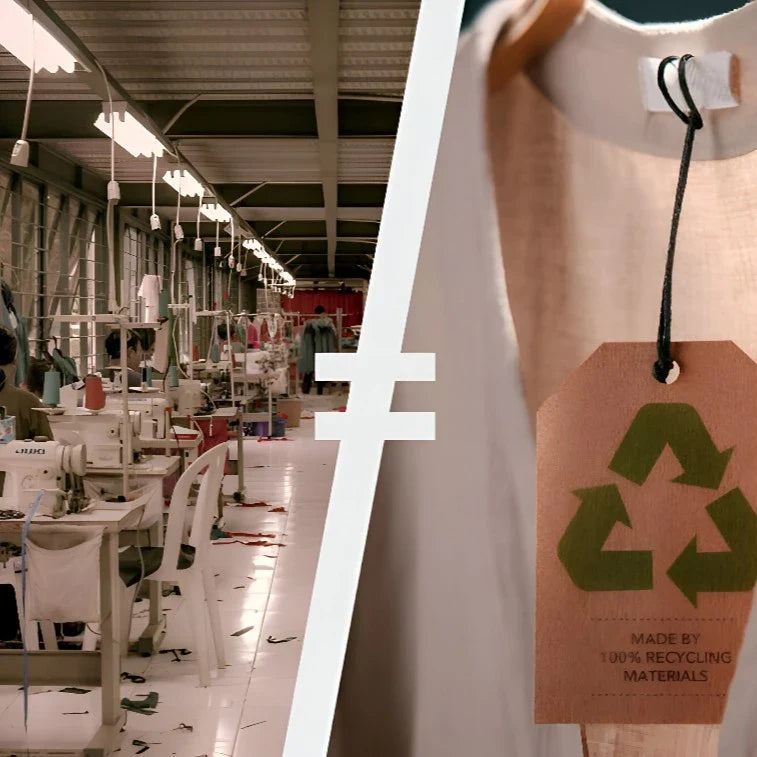Clothing Landfills:
The Real Problem of Fast Fashion?

AYA | OCTOBER 1, 2024
READING TIME: 5 minutes
There is no doubt that in recent years, awareness about the importance of sustainable fashion has reached more people. There is increasing interest in knowing what fibers clothes are made from, how animals are treated if the fibers come from animals, and where discarded clothes end up, among other topics.
These concepts, which aim to understand the environmental and social impacts of the fashion industry, are called Clothing Sustainability Knowledge (CSK) [1]. This is a great step to start, but it is not enough, and the clearest example is the growth of Fast Fashion.
CSK covers the entire life cycle of a garment and the emissions it generates, from how the raw materials for the fibers are obtained to where the clothes end up or what happens to them when you donate or simply throw them away.
In 2021, the textile industry generated around 1.025 billion tons of CO2eq —carbon dioxide equivalent, it is the standard magnitude of measurement of greenhouse gasses emitted into the atmosphere. [2]
This figure was calculated by Apparel Impact Institute & World Resources Institute where the extraction of the raw material (hydrocarbons in the case of polyester or animal or vegetable fiber in the case of organic fiber) generates between 10% and 20% of the emissions, the entire supply chain (from the generation of the threads to the distribution of the garments) generates between 75% and 85%, and finally the disposal only 1%. [3]
So, if we focus only on greenhouse gas (GHG) emissions from clothes disposed of at the end of their life, it's about 10.25 billion tons of CO2eq. [3]

Knowing that 52% of global clothing production is made of synthetic fibers such as polyester. [2] This means that 5.33 billion tons of CO2eq will be GHG emissions and that along with them, microplastics will proliferate into the environment. This figure is alarming in itself, as it shows that the mere act of throwing away my clothes, whether made of organic or synthetic materials, or sending them to a sanitary landfill or a clothing landfill, significantly harms the planet. So, trends such as Fast Fashion, which only seek to increase production volume at very affordable prices, increase this climate problem exponentially. [4]
Synthetic vs. Organic Clothing: Understanding Their Environmental Impact
The benefits of clothing made from organic fibers compared to synthetic fibers are undeniable. Organic fibers do not contain PET —polyethylene terephthalate, it is the main element for producing containers and bottles of soda, water and oil; also for the production of polar fleece coats— which means that the microfibers released into the air during the garment’s life are biodegradable rather than microplastics [3], as they come from organic fibers (cotton, alpaca, merino, etc.) and pose less health risk.
So, when do GHG emissions come into play? When clothing is disposed of in sanitary landfills engineered to prevent the spread of the effects of decomposition, emissions are less of a problem because they are largely covered up. Nevertheless, what’s happening today is different. Just as oceanographer Charles Moore discovered the Great Pacific Garbage Patch in 1997, which now covers 1.5 million km² with an average of 80,000 tons of plastic [5], clothing landfills are now being found around the world.
Notable examples include the Atacama Desert landfill (Chile), with around 60,000 tons of discarded clothing, and the landfill near Accra (Ghana), which has reached a height of 15 meters, 60% of which is clothing [6]. These outdoor piles of mostly synthetic clothes —about 60% according to the Apparel Impact Institute — will release microplastics into the atmosphere, which wind will spread around. If microplastics in the ocean were already a global climate issue, now microplastics are also an atmospheric problem.
On the other hand, organic fibers will decompose faster in the open air, emitting methane — one of the main greenhouse gasses—through a natural process [3]. However, it should not be overlooked that clothes are mostly dyed with chemicals, so their fibers will not only emit methane but also other chemical compounds, which will delay the natural degradation of these fibers.
So, while synthetic clothing harms the environment and natural fibers impact it to a lesser extent, is replacing synthetics with naturals the ultimate solution? Read more here.
Glossarykeywords
CO2eq:
Carbon dioxide equivalent. Measurement of greenhouse gasses emitted into the atmosphere
Greenhouse gas emissions (GHG):
Trap heat and keep the planet warmer than it would be without it
Methane:
One of the main greenhouse gasses.
Glossarykeywords
CO2eq:
Carbon dioxide equivalent. Measurement of greenhouse gasses emitted into the atmosphere
Greenhouse gas emissions (GHG):
Trap heat and keep the planet warmer than it would be without it
Methane:
One of the main greenhouse gasses.
References:
[1] Yan R., Diddi, S., Bloodhart, B. (2021). Predicting clothing disposal: The moderating roles of clothing sustainability knowledge and self-enhancement values. Cleaner and Responsible Consumption 2021; (3). https://doi.org/10.1016/j.clrc.2021.100029
[2] The World Resources Institute and the Apparel Impact Institute (2022) Roadmap to Net Zero Report 2021 [Internet] Washington. 2022 Jan. [cited 2024 Sep 20]. Available from: https://apparelimpact.org/resources/roadmap-to-net-zero-report-2021/
[3] Millward-Hopkins, J., Purnell, P., Baurley, S. (2023). Scenarios for reducing the environmental impacts of the UK. Journal of Cleaner Production 420 (2023) 138352. https://doi.org/10.1016/j.jclepro.2023.138352
[4] Lundberg, D., DeVoy, J. (2022) The Aftermath of Fast Fashion: How Discarded Clothes Impact Public Health and the Environment.[Internet] Boston, 2022 Sep 22. [cited 2021 Sep 20]. Available from: https://www.bu.edu/sph/news/articles/2022/the-aftermath-of-fast-fashion-how-discarded-clothes-impact-public-health-and-the-environment/
[5] Lebreton, L., Slat, B., Ferrari, F. et al. Evidence that the Great Pacific Garbage Patch is rapidly accumulating plastic. Sci Rep 8, 4666 (2018). https://doi.org/10.1038/s41598-018-22939-w
[6] Barlett, J. (2023). Fast fashion goes to die in the world's largest fog desert. The scale is breathtaking. [Internet] 2024 Apr 15. [cited 2024 Sep 20] Available from: https://www.nationalgeographic.com/environment/article/chile-fashion-pollution
You don't have to put all the weight on your shoulders. Every action counts. At AYA, we fight microplastic pollution by making a 100% plastic-free catalog.
Visit Our Shop →You May Also Like to Read...
The Truth About Recycled Polyester in Fashion
Discover the hidden costs of recycled polyester. Learn why rPET isn't as sustainable as it seems and what real circular alternatives look like.
Synthetic Fabrics vs. Organic Cotton: Impact on Skin Health
Discover how polyester and other synthetic fabrics can irritate your skin and why organic cotton, especially Pima cotton, is a healthier and safer choice for sensitive skin.
What Peru Whispers: Organic Pima Cotton Grown with Tradition and Care
In the quiet corners of Peru, organic pima cotton is grown with respect for the land. A luxurious, timeless textile waiting to be discovered.
Why Sustainable Fashion Shouldn’t Be Fast Fashion
Recycled materials and green labels won’t fix fast fashion. Discover why real sustainability means slowing down.






